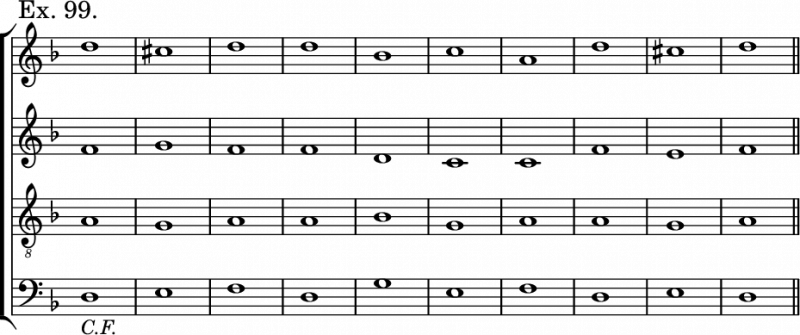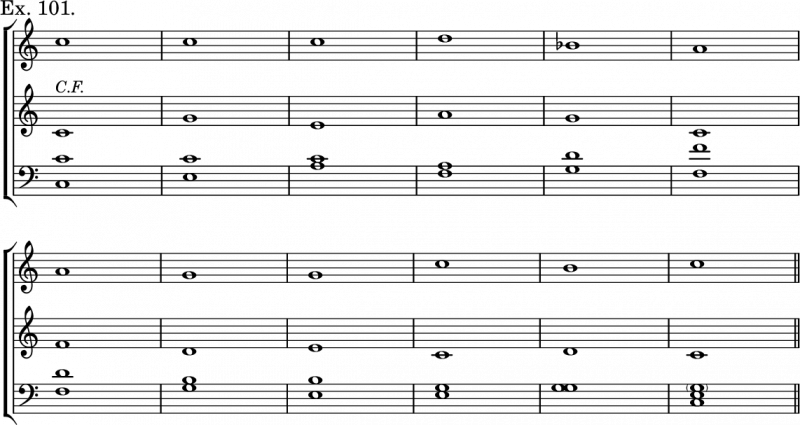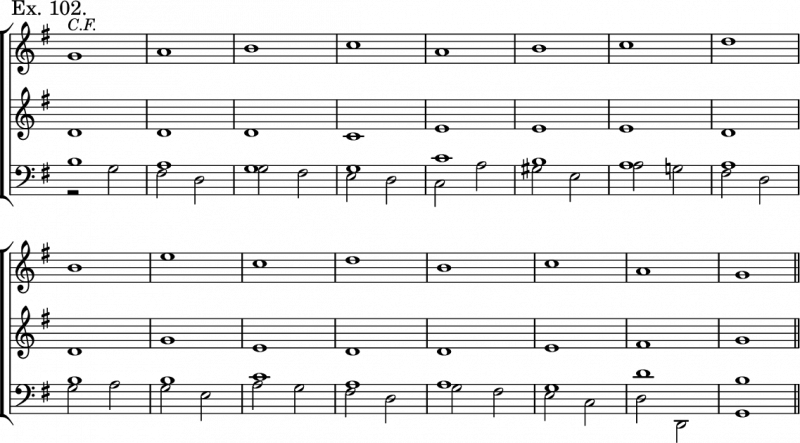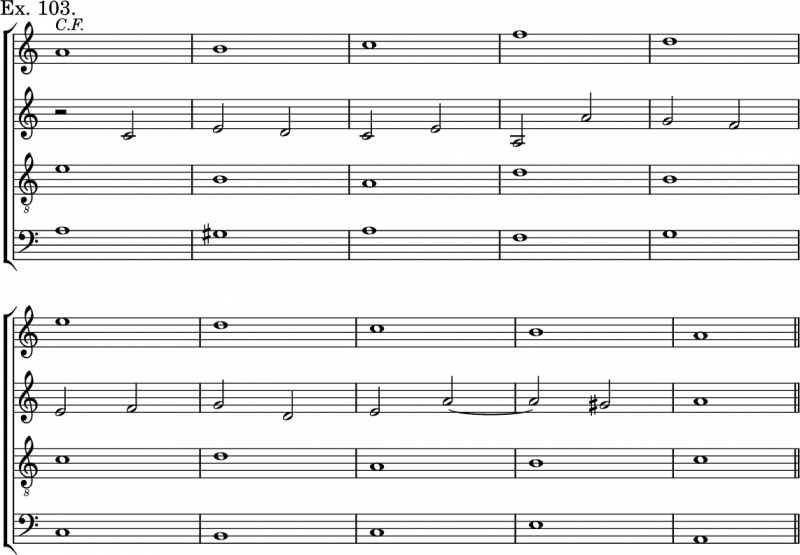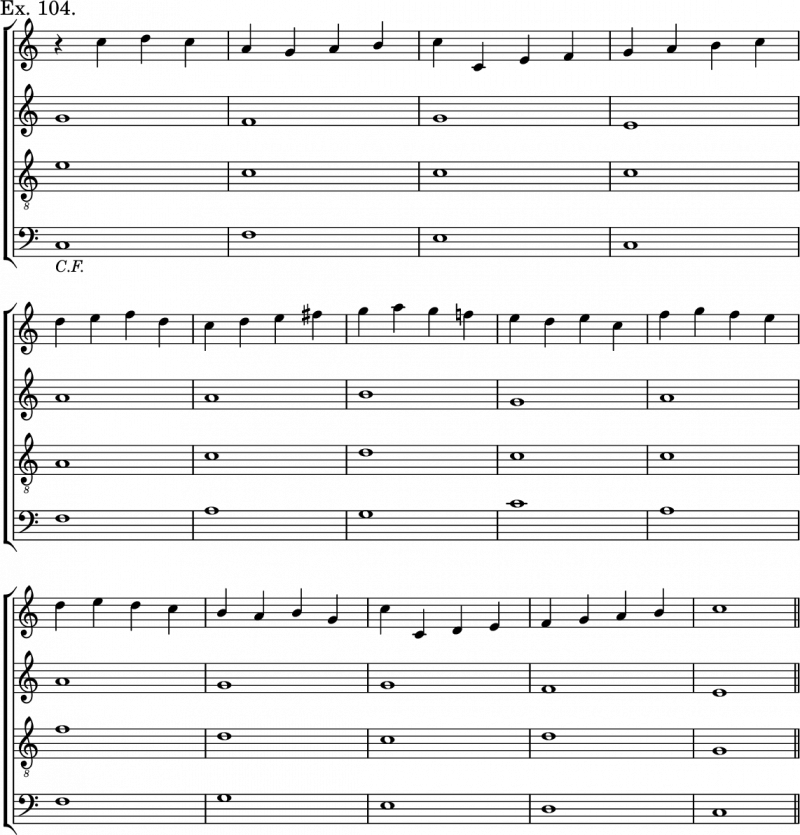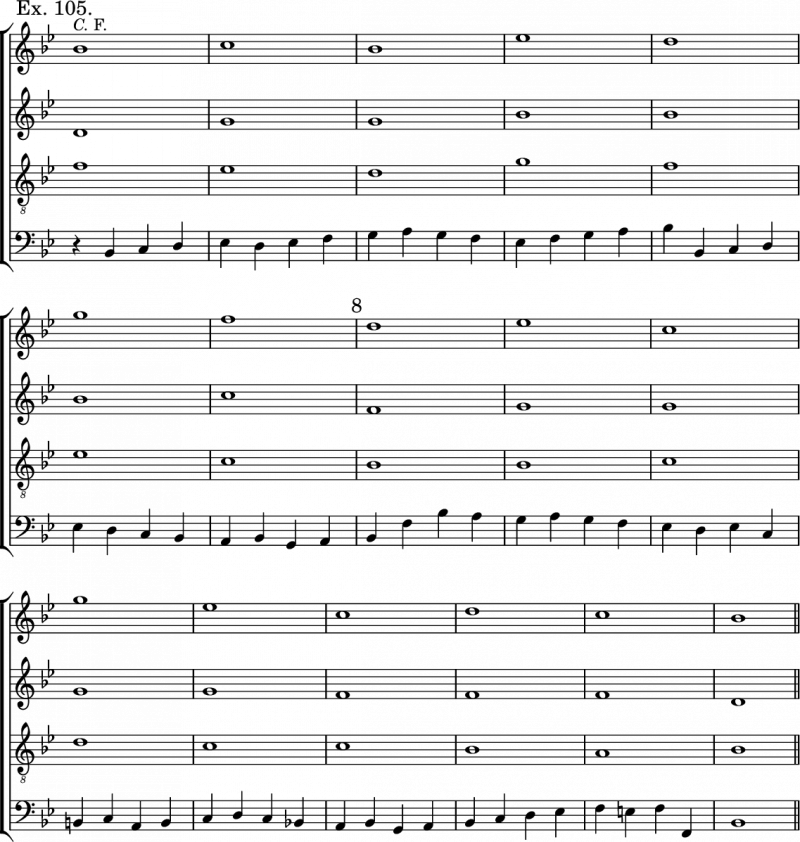Counterpoint (Bridge): Chapter 11
First, Second, and Third Species in Four Parts
General Rules
The additional part now necessary is obtained by doubling one of the three notes of the triad or chord of the sixth, these being the only chords used. The context will generally decide what note should be doubled, it being well to avoid doubling the major third to the root, more especially when it is a leading-tone 1). Two of the counterpoints will thus be in noes of equal value with the cantus firmus; the other will consist exclusively of one of the species now under consideration, i.e. of semibreves 2), minims 3), or crotchets 4).
When possible, the first bar should contain a complete chord, but this will depend upon the necessary progression to the second bar. All the parts may commence in octave or unison (see Ex. 101).
Although the rules given for the various species of counterpoint of which we have already treated remain in force, they are observed much less rigidly as the parts increase in number. The relaxation of the rules as to hidden consecutives 5) mentioned in the rule just above Ex. 66 in Chapter 6 6). will be found useful and necessary.
The student may combine the three species we have just been explaining (see Ex. 112 in Chapter 12).
Musical Examples
Note: In Ex. 99, as well as some of the following, the tenor line sounds down an octave.
The nature and position of the cantus firmus in Ex. 100 involves a wide distribution of parts, not altogether advisable. The melody is, however, smooth, and moves in effective contrary motion with the cantus firmus. The last bar might, perhaps, with advantage, follow the ancient models, and have no third 7).
A good effect is produced in the above example by the sequences. The student may begin as above, with a chord of the sixth, but not with a fourth (see the first paragraph of Chapter 3) 8).
As the part in minims 9) in the above example enters upon the third of the chord, it is well to let the tenor begin with a fifth, thus avoiding a unison, and causing the alto to enter with good effect.
In bar 8 of the above example, a 6/4  is used, the bass moving in arpeggio.
is used, the bass moving in arpeggio.
| Navigation | ||
|---|---|---|
| « Chapter 10 | Contents | Chapter 12 » |
